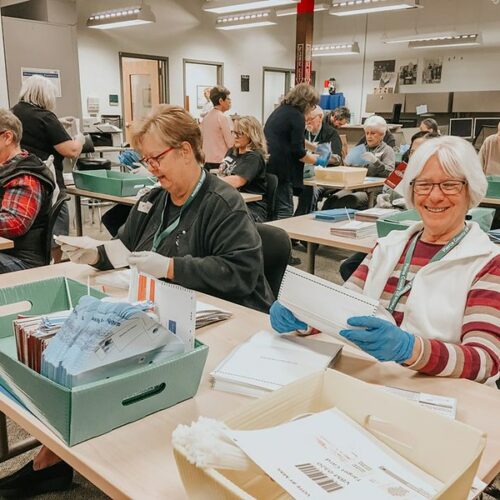Online Learning Tech Continues in Higher Ed Despite In-Person Classes
Although students at Washington State University returned to campus this fall, technology and many of the remote teaching strategies used during the pandemic are likely here to stay.
When students left campus in March of 2020, the university already had many of the technologies in place to transition to online learning, said Dave Cillay, WSU vice president for Academic Outreach and Innovation. Their biggest challenge was switching educators to remote instruction.
“We had almost 1,000, faculty members go through some type of training. some are well versed in the tools already, and they wanted just some tweaks to what they already knew,” Cillay said. “Others were beginning from scratch and walked through a number of different trainings through that two week window [during spring break], and then through the spring, and then through the summer.”
Now that students are back in-person, one of the biggest changes since before 2019 has been the increase in global campus enrollment by roughly 3,000 students, despite the ability to attend in-person this fall, Cillay said.
Another major change is that although students are back in person, they’re continuing to see more flexible learning options than before the pandemic, Cillay said. They also have the ability to interact with classmates using technology.
Video recordings mean that students are now able to watch their classes online, even if they missed attending in-person. Some students in large classes have also found Zoom lectures to be more engaging because of the ability to talk with other students via the chat function, he said.
“Because of the chat room, students were responding by commenting and connecting,” he said. “In the large lecture hall class[es], I couldn’t necessarily do that because it was a different way of connecting with fellow students in those larger classes.”
Across the border at the University of Idaho, the pandemic led to a dramatic increase in technology investments. The U of I spent roughly $500,000 upgrading technology to provide remote education last year, said Dan Ewart, U of I Vice President for Information Technology.
The university also had roughly $1.4 million in grant funding, he said, which included over 400,000 from the U.S. Department of Agriculture to expand rural internet and technology access at extension offices in 21 counties, and an Idaho Department of Commerce Rural Broadband grant of $410,000 to offer public wifi at extension offices in Boundary, Bonner and Kootenai counties.
The U of I is focusing on providing in-person education unless students are physically unable to attend due to illness or other extenuating circumstances, Ewart said. In rural Idaho, providing internet to students at home is also a major challenge that hasn’t been fully addressed. But changes during the pandemic mean the U of I is better equipped to help students stay on track if they do have to miss class, he said.
“We now have over 200 technology equipped classrooms across the university that allow people, allow professors to both, you know, record their lectures or participate via zoom or any of those kinds of technologies,” he said.















